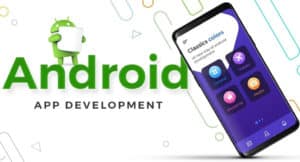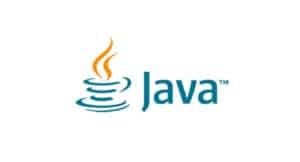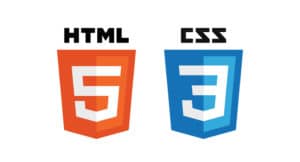
Research by Pew Research Center has shown that around 77% of Americans spend most of their time using android apps. In 2017, it was noted that more than 190 billion apps were downloaded within a year. These statistics show you the bright future every Android app development company holds.
Applications are the ones that make a smartphone worthy of the attention it receives from the audience worldwide. Android apps have added some valuable changes to our lives. Let’s take the example of Airbnb, which enables users to make real-time hotel and lodging reservations. It has eliminated the difficulties travelers once faced while trying to find a place to call home in a strange city. Another great example is social media websites like Instagram, Facebook, Whatsapp, etc., which have made long-distance communication sparingly easy and quick. In light of these considerations, an increasing number of companies and developers are working to produce android that will serve the general public and succeed in their business.
Although difficult, developing Android apps is time well spent. When attempting to create an app, there are several aspects to take into account. The five key fundamentals for developing Android apps that any beginner should understand are covered in this post.
Here we go,
Master the programming languages
As per a report by Statista, JavaScript and HTML/CSS were referred to as the most commonly used programming languages among software developers in 2021. 65% stated that they prefer JavaScript and the other 56% prefer HTML/CSS. A thorough understanding and knowledge of these languages must create a successful android app. The official language to develop an android application is Kotlin, but as mentioned above, other languages like Java and HTML support android app development in the best possible manner. Let us talk about these languages in a little more detail.
JavaScript

Both Java and Kotlin are considered official languages for android apps. There are various applications in your play store that are built using Java. Java has support from a huge online community that also includes Google.
Java is one of the most widely used android app development languages, even though it can be a bit complicated for beginners. It consists of concurrency, constructors, checked exceptions, and null pointer exceptions.
HTML,CSS

Other than Java, HTML and CSS are the two most popular programming languages for creating android applications. They use the Adobe PhoneGap framework to create hybrid packages type apps that can be shown through “WebView.” Hybrid app development means using that application on both iOS and Android platforms.
Complete understanding of app development tools
For successful android app development, you must thoroughly understand automation tools and integrated app development software. Being an open-source platform, you can develop various customized applications for android. Different tools will be a huge help in achieving this objective.
Here is the list,
Android SDK
Android SDK contains API tools and libraries required to create and test debug android applications. The best way is to download the ADT bundle for faster development and download Android apps. It contains pivotal components like Android SDK tools, Android platform tools, and Eclipse.
Native Development Kit (NDK)
NDK is a toolkit that allows users to use native code languages like C and C++ with android. The programmers can use the existing code from the NDK library. NDK won’t benefit all the applications, so try to use it if only it is necessary for your app development.
Titanium Mobile SDK
Titanium SDK is a development tool for creating cross-platform applications using a single JavaScript code. It helps you create applications that offer your users immersive and compelling user experiences.
Hypertext Android Creator
HAC is an easy-to-use android app development software that supports a wide range of devices. The language used here is “HyperNext,” which is easy to learn and comprehend.
Once you familiarize yourself with these tools, you will be able to manage your builds quite easily.
Knowledge of application components
For the development of an effective Android app, application components are essential. These parts include the manifest file, which contains information on each app component and how they work together. The manifest file provides the application’s platform requirements, metadata, external libraries, and hardware configuration.
There are a total of five different types of application components mentioned below:
Activities
Activities are referred to as your app’s display layer. Extensions of the Activity class serve as the foundation for your application’s user interface. Activities set the layout, display the output, and react to user inputs by utilizing views and fragments. A subclass of the class Activity is used to implement activity that works together for a consistent and compelling user experience in the application.
Services
Services are the invisible backend elements that work for the app’s development. These elements are crucial for updating your data resources, broadcast intent, and trigger notifications. They perform necessary tasks even when the application is off. It doesn’t offer a user interface. For example, services allow you to use another app while playing music in the background.
Content providers
Content providers are used to managing some share of your app data. This component allows you to query and modify the data you store on the web, in an SQLite database, or the file system. Additionally, it is handy for reading and writing private data to your app.
Broadcast Receivers
This application development component is responsible for responding to wide broadcast announcements. Most broadcast receivers are system-generated, and even though they lack a user interface, they can generate a status bar notification to inform the user when a broadcast takes place. Typically, it merely performs minimum labor and is a gateway to the other components.
Activating components
The intent is the activating component that activates 3 out of 4 components: services, activities, and broadcast receivers. It is a message-sending framework to guide certain components to perform any particular action. Whether the component is a part of your app or not, intents can also tie different components to one another during runtime.
Information regarding Fragments, Threads, Tasks, Loaders, and Android Application
Android applications have several different components, each with its purpose. The most important ones are fragments, threads, tasks, loaders, and the Android application.
- Fragments are a way to modularize your code, making it easier to reuse and more maintainable. A fragment is a piece of a larger UI, usually with its lifecycle and input events. Fragments can be used in any activity, but they’re especially useful in activities using the FragmentManager to manage multiple fragments simultaneously.
- Threads are a way to run multiple pieces of code simultaneously. Android uses threads to keep the UI responsive while background tasks are running. If you’re not careful, your background tasks can cause the UI to become unresponsive. That’s why it’s important to use threading primitives such as Handler, AsyncTask, and IntentService.
- Tasks are a way to break up a larger job into smaller pieces that can be run in parallel. Tasks can download data, process bitmaps, or even play audio. Using tasks, you can make your app more responsive and reduce the chance of ANRs (app not responsive).
- Loaders provide an easy way to load data asynchronously into your UI. Loaders are especially useful for content providers and cursors. Using a loader, you can avoid blocking the UI while the data is being loaded.
- The Android application is the top-level component in an Android app. The Android application is responsible for managing the app’s lifecycle and resources. It also provides a way to launch activities and services. The Android application is also the app’s data and settings gateway.
Choose the right tools.
When making the right choice for the tools you need for your Android application, a few key points must be kept in mind. The first is to ensure you choose the right tools for the job. There are a lot of different tools out there, and not all of them will be right for your particular project. Make sure to do your research and choose the tools that will work best for you.
Another important point to remember is that you don’t necessarily need all the bells and whistles. Sure, it would be nice to have all of the latest and greatest tools at your disposal, but if you’re on a budget, you may not be able to afford them. In this case, it is important to prioritize and choose the tools you need and then look for ways to save money on the others.
Finally, keep in mind that you can always change your mind later. If you don’t like a particular tool or it isn’t working out the way you had hoped, don’t be afraid to switch to something else. There is no shame in admitting something isn’t working and making a change. The important thing is that you make the best decision for your project at the time.
There are some parameters that every android app developer considers while creating an android application. These are as follows:
Performance
Your application’s performance needs to be quick and responsive. When your app fails to respond to a user within 5-6 seconds, the operating system puts it under
ANR, i.e., application not responding.
Limited resources
Wake locks are a technical mechanism that allows a particular device to perform a certain task even after going into sleep mode. This mechanism needs to be used economically because of the availability of limited resources. Unnecessary hardware checking like GPS and accelerometer can quickly drain the battery.
UI thread
Users will notice delays of greater than 100 milliseconds in the UI thread. That is why make sure that the thread is never blocked.
In Conclusion,
Understanding the fundamentals of android app development is crucial to creating a successful app with a longer lifetime. The first step is to acquire mastery of programming languages like HTML and CSS. Make sure to acquire knowledge about all the tools and components to make no mistakes in your app creation.
Read the above blog and gain all the necessary information about app development now!
